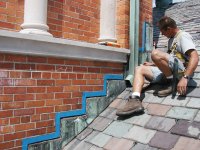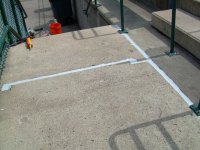I have concrete driveways that I guess are 18 years old. As I guess is common, they were built with wood (1 x 2?) in the expansion joints. That wood has rotted and much of it is missing. So dirt, leaves, grass clippings, etc. gets in the cracks. Yesterday I noticed a pedestrian sidewalk at an outlet mall that has some kind of gray, rubbery stuff in the joints. Can someone tell me what that stuff is and where to get it, or tell me something better to use?
Bird, My first guess would be polyurethane caulk. "Gray, rubbery joint sealer", sounds like Sikaflex 1A, color limestone, it's pretty much the industry standard around here.
http://www.sikacorp.com/tds-cpd-sikaflex1a-us.pdf
It comes in a caulking tube, it does take a little bit of a skill level to make it come out nice and even over a long joint, but if you have ever done any kind of caulking where you had to "tool" the joint, you'd be fine.
I can't compare it to the self leveling stuff cause I've never used it, but this caulk is a premium construction material, we use it in the most demanding applications like flashings, sills, lintels, vertical and horizontal expansion joints, capstones on parapets.
I just did a little reading (in the middle of this reply) on those Polyether self leveling materials and they sound pretty good also. might be just what you need.
What ever you choose, Good Luck, one tip when your doing a job like that is to mask the top edges of the joint with tape, gives you a nice straight line and keeps surrounding surfaces clean.
JB


